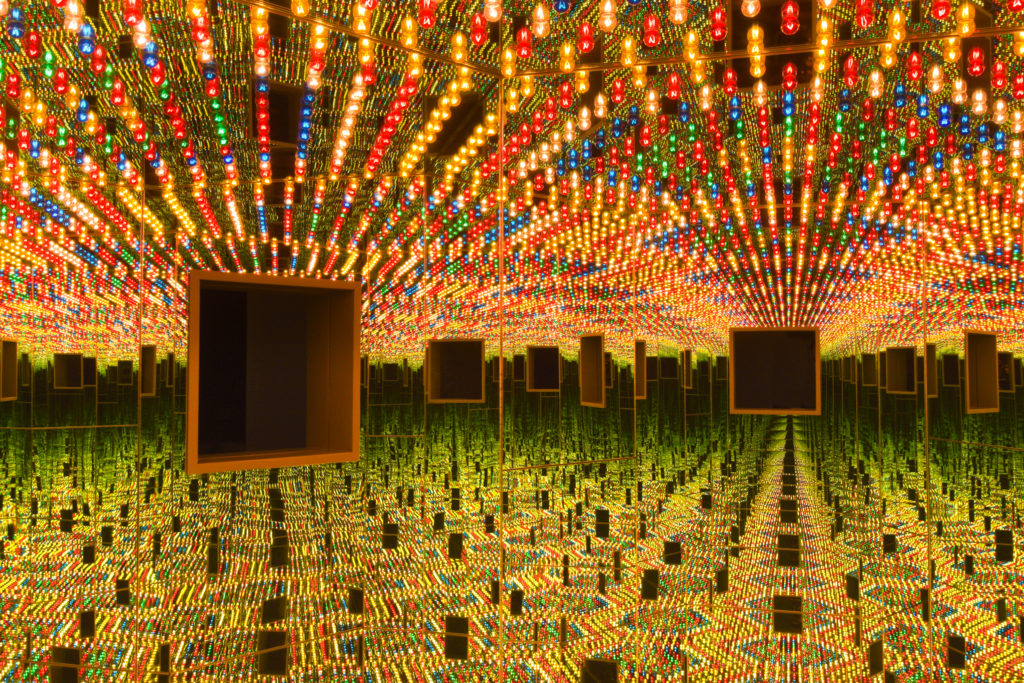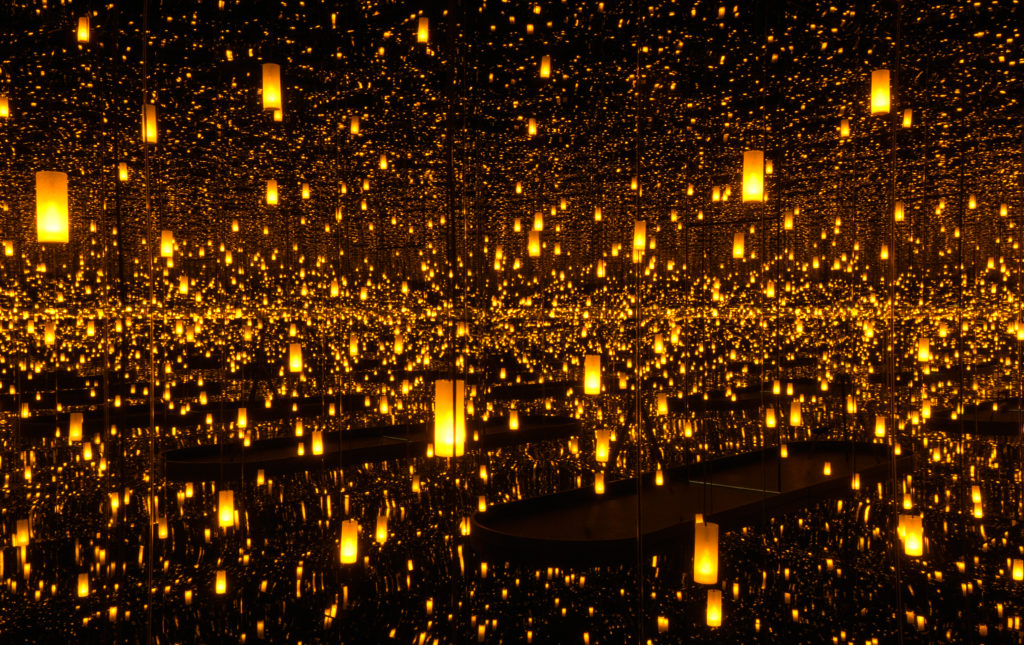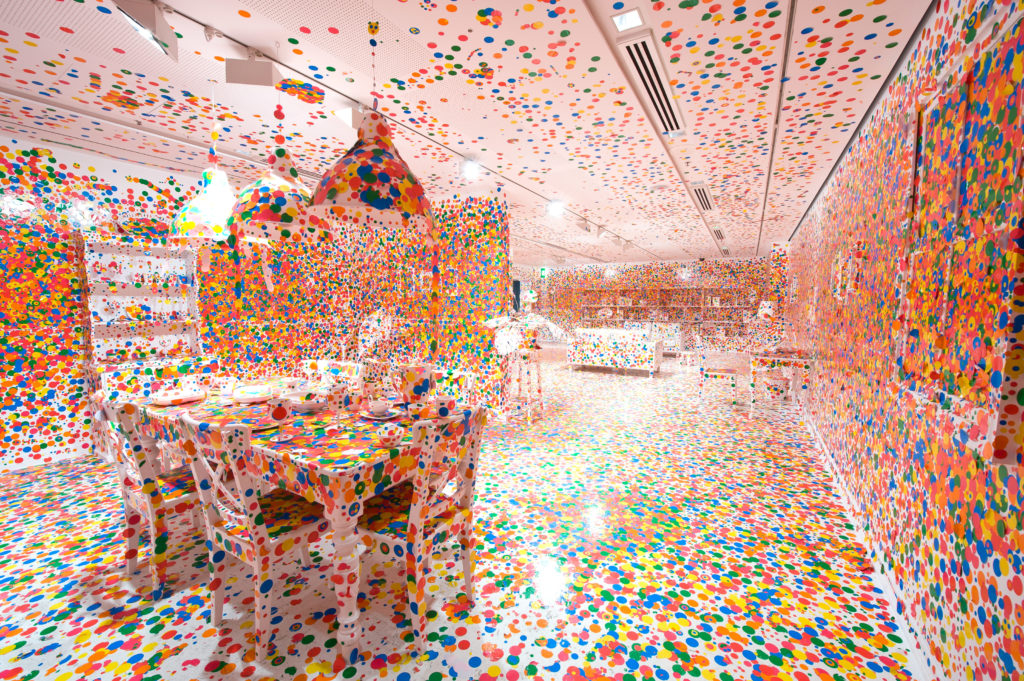
There’s a reason why I waited half a day online to buy a ticket to see Yayoi Kusama’s “Infinity Mirrors” at the High Museum. It’s the same reason why tickets sold out within two days of its opening to the general public.
It’s a masterpiece collection unlike any other.
Yayoi Kusama, an 89-year-old Japanese contemporary artist, debuted her intricate kaleidoscopic rooms in Washington, D.C.’s Hirshhorn Museum and Sculpture Garden in February 2017. Since then, her colorful exhibit has made an appearance in six major cities in the U.S., gathering a strong following among art connoisseurs and laypersons alike. The exhibit will be showcased at Atlanta’s High Museum until Feb. 17, 2019, after which the collection finishes its North American tour.
Each “infinity room” is a cubic room roughly the size of a storage shed that contains an array of colorful sculptures and lights, many of which are marked by Kusama’s signature polka dots. Because mirrors line the walls, the reflections give the effect of the images going on for eternity, almost like you’re lost in an alternate universe. I overheard a fellow line-waiter justifiably compare the individual rooms to a TARDIS from “Doctor Who,” as each room appears much bigger on the inside than you would assume.
When the elevator doors open to the entire Kusama floor, a picture of Kusama herself welcomes guests to her repertoire, plastered on the side of a wall with her biography. Her Edna Mode haircut frames her stoic expression as she sits among her colorful works, ready to show new worlds that she’s created. After walking into the first room, “Aftermath of Obliteration of Eternity,” I was immersed in darkness for a brief second before hundreds of cool-toned hanging light bulbs reflected off mirrored walls, plunging me into the space-time continuum. As a college student, I appreciated immersing myself in a silent universe devoid of midterms, papers and impending deadlines. I would advise viewers to leave their phones in their pockets or in the cubbies outside the room — at least for the first time — because the purpose is to disconnect and transport to another world. If you must have Snapchat proof that you went, and you don’t have the luxury of going back twice, be quick about it, because the staff member will kick you out after 30 seconds (they stand outside with a stopwatch).
After walking into the first room, “Aftermath of Obliteration of Eternity,” I was immersed in darkness for a brief second before hundreds of cool-toned hanging light bulbs reflected off mirrored walls, plunging me into the space-time continuum. As a college student, I appreciated immersing myself in a silent universe devoid of midterms, papers and impending deadlines. I would advise viewers to leave their phones in their pockets or in the cubbies outside the room — at least for the first time — because the purpose is to disconnect and transport to another world. If you must have Snapchat proof that you went, and you don’t have the luxury of going back twice, be quick about it, because the staff member will kick you out after 30 seconds (they stand outside with a stopwatch).
As soon as you blink or spin around twice, the door opens again, and you’re forced to enter the bland real world, only to trudge back to the end of the line for another 30-second glimpse into Kusama’s wonderland.
Because the exhibit is so popular, each ticket-holder is assigned a 30-minute window during which one can explore the rooms. My favorite, “The Obliteration Room,” features an all-white replica of a house with hundreds of colorful circles that guests are free to stick wherever they’d like. The room is thus a collaborative piece, unique to each city, cemented in time for millions of others to see. I took delight in the chance to interact with the exhibit and become an artist myself, placing a red circle on a lampshade or a green one on a chair. As the exhibit nears its end, white space is sure to be a hot commodity, so try and visit earlier to claim your spot. And keep an eye out for a small blue circle underneath one of the bookshelves — that one’s mine.
My favorite, “The Obliteration Room,” features an all-white replica of a house with hundreds of colorful circles that guests are free to stick wherever they’d like. The room is thus a collaborative piece, unique to each city, cemented in time for millions of others to see. I took delight in the chance to interact with the exhibit and become an artist myself, placing a red circle on a lampshade or a green one on a chair. As the exhibit nears its end, white space is sure to be a hot commodity, so try and visit earlier to claim your spot. And keep an eye out for a small blue circle underneath one of the bookshelves — that one’s mine.
Unlike at normal museum exhibits, viewers typically experience Kusama’s artwork alone, without any distractions. However, waiting for each room can form a bonding experience between fellow museum-goers. The lines are where real discussions take place, and people are free to talk about their favorite rooms and their reactions to each.
While you’re not in line, spend some time absorbing Kusama’s other works such as gouache paintings, old exhibition posters and phallic sculptures that reflect her contempt for sexuality since childhood. It’s hard to be bored when there’s mind-stimulating art everywhere you turn. From toddlers to seniors, Kusama’s works entertain all ages as much as they aesthetically please.
When one receives the opportunity to see the final North American iteration of the “Infinity Mirrors” exhibit, much like winning the golden ticket to Willy Wonka’s Chocolate Factory, one does not decline. Although nothing in the exhibition is edible, Kusama’s works are truly a rewarding feast for the eyes.




